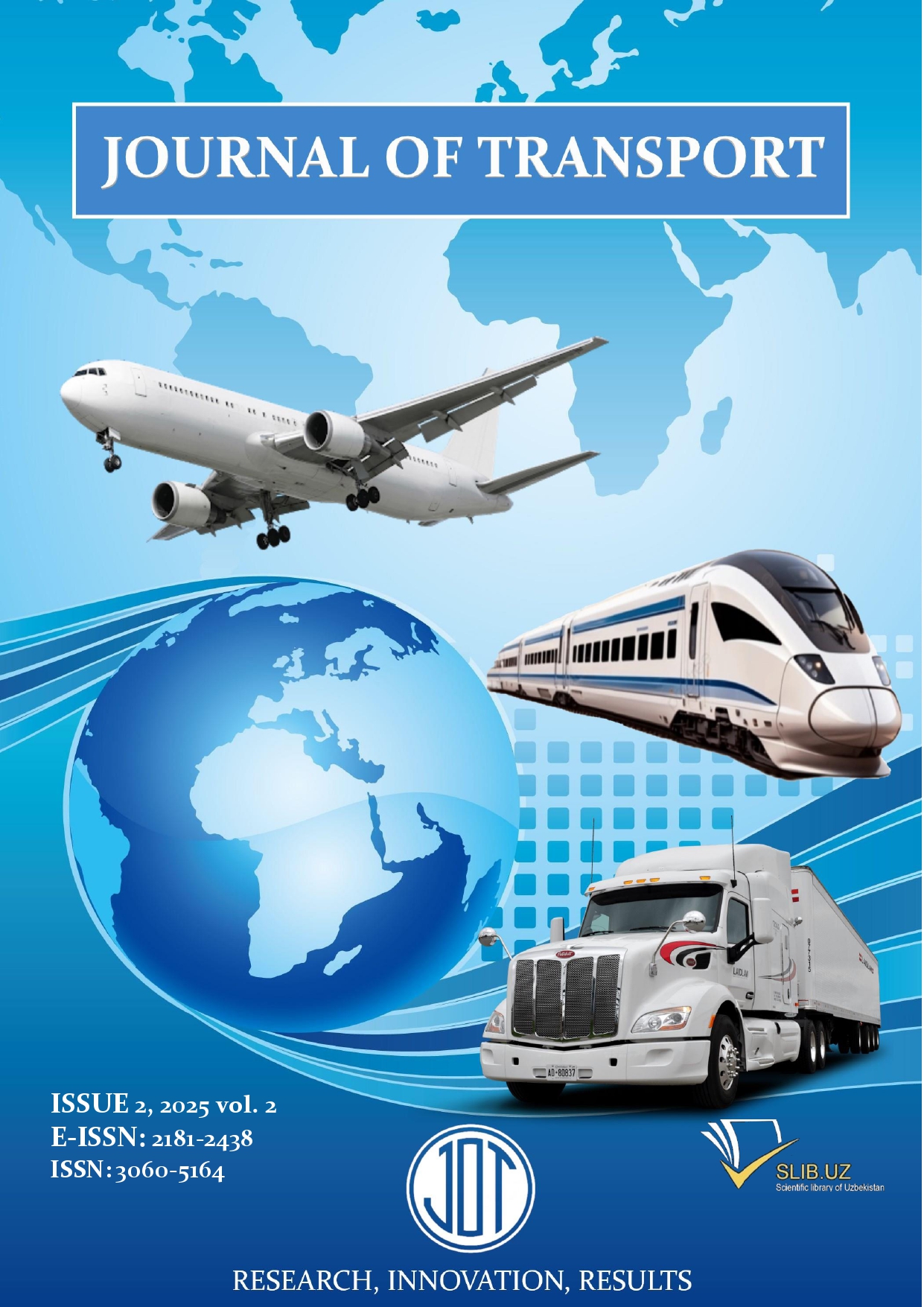Stability assessment of continuous welded railway with Vossloh fastenings using the finite element method
Abstract
This article presents a methodology for assessing the stability of continuous welded rail (CWR) track with Vossloh fastenings using the finite element method. The influence of longitudinal and transverse forces generated during train movement and braking on the condition of the rail string is analyzed. A finite element model is developed that accounts for sub-rail foundation deformations and the resistance of fastenings under various loading conditions. Particular attention is paid to the impact of geometric and operational factors such as track irregularities, rail defects, and wheelset wear. A Visual Basic macro was developed for the numerical evaluation of track stability loss. The results identify the most vulnerable zones of CWR track and define its critical operating conditions. Engineering recommendations are proposed for monitoring and mitigating deformation risks in high-traffic areas. The modeling outcomes may serve as a basis for updating regulatory requirements for the maintenance and operation of CWR track.
References
[2] Иванов П. С., Клочко В. А. Природа усталостных дефектов рельсовых плетей бесстыкового пути // Техническая механика НАНУ. – 2000. – № 1.
[3] Парахненко И. Л. Анализ сил взаимодействия в контакте «колесо–рельс» при различных трибологических вариантах // Транспорт Урала. – 2019. – № 2 (61). – С. 54–57.
[4] Першин С. П. О сопротивлении балласта сдвигу и способах усиления температурно-напряженного пути против потери устойчивости // Сб. науч. тр. / МИИТ. – 1960. – Вып. 111. – С. 126–136.
[5] Ершов В. В. Устройство бесстыкового пути при отступлениях от норм содержания // Путь и путевое хозяйство. – 2008. – № 3. – С. 13–15.
[6] Bondarenko A. A., Wolow D. B., Gerber U., Fengler W. Der Einfluss des Antriebsstromes auf die zusätzliche Erwärmung des Schienenstrangs // Der Eisenbahningenieur. – 2007. – Nr. 5. – S. 19–20.
[7] Bondarenko A. A. Der Einfluss des Bremsens langer Züge auf die Schienenerwärmung // Der Eisenbahningenieur. – 2009. – Nr. 4. – S. 37–41.
[8] Ковенькин Д. А. Исследование воздействия суммарных боковых сил на элементы верхнего строения пути при вписывании экипажа в кривые участки пути // Проблемы и перспективы изысканий, проектирования, строительства и эксплуатации российских железных дорог: материалы Всерос. науч.-практ. конф. (10–11 окт. 2007 г.). – М. : УрГУПС, 2007. – Т. 1. – С. 23–26.
[9] Лесов К.С., Хальфин Г.Р. Расчет и оценка устойчивости рельсовой плети бесстыкового пути для условий Узбекистана. // Journal of Advanced Research and Stability Special Issue, April 2022, p. 339-343.
[10] Лесов К.С., Хальфин Г.Р. Диагностическое средство для косвенного определения усилия нажатия клемм скрепления Pandrol Fastclip. //Научный журнал “Universum: технические науки” - №6 (87), 2022. – С. 13-15.
[11] Иванов П. С., Коннов Ю. В., Зайцев Н. И., Филиппов А. И. Прогнозирование и техническая диагностика усталостных дефектов рельсов железнодорожного пути // Труды XVI Рос. науч.-техн. конф. «Диагностика и неразрушающий контроль». – СПб., 2002.
[12] Методика оценки воздействия подвижного состава на путь по условиям обеспечения его надежности: утв. распоряжением ОАО «РЖД» от 22.12.2017 г. № 2706р // СПС «АСПИЖТ».





